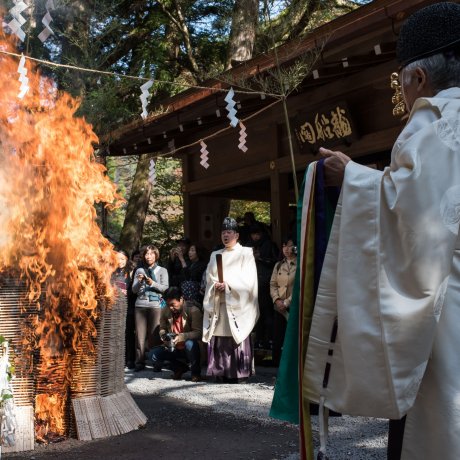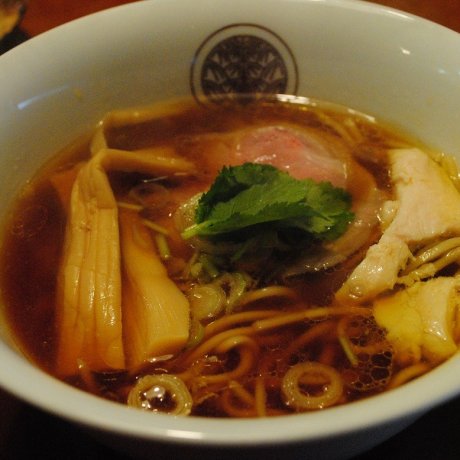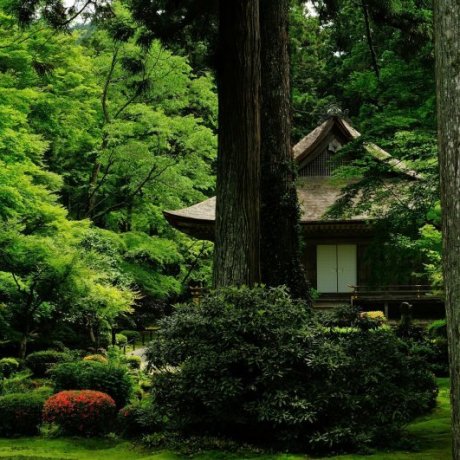
Kyoto's Historic Kifune Jinja
Sandra IsakaSet deep in the mountains of Kyoto, historic Kifune Jinja is a great place to visit for those who want to see a different side of..

Kifune Shrine, nestled in the picturesque mountain town of Kibune, is said to be over 1,300 years old and is dedicated to the god of water. The complex has three shrine buildings along the mountainside: the main shrine (front shrine), Yui no Yashiro (middle shrine), and Okunomiya (rear shrine). A common pilgrimage path is to visit the main shrine first and then go to the rear one, before ending your journey at the middle shrine.
One of the shrine’s most notable features is its lantern-lined stone steps. The brilliant coloring of the red lanterns compliments the surrounding nature during all seasons—whether it's the verdant foliage of spring and summer, the fiery leaves of autumn, or the pure-white snow of winter. No matter the season, the ascension to the shrine is always a magical one.
The first and main shrine building has a modest wooden facade with sparse gold accents that perfectly reflect the encircling forests. Located in front of the building is a stone wall with a small fountain of sacred water (goshinsui) where you can have a sip of the crisp mountain water. The shrine also offers a unique form of fortune telling called mizuura mikuji. After you purchase the fortune telling sheet, place the paper in a fountain near the shrine. As the water seeps through the paper, it will reveal your fortune!
The middle shrine (Yui no Yashiro) is smaller in size and is known as a shrine for love. Legend has it that Ninigi no Mikoto, great grandfather to Emperor Jinmu, did not receive the hand of the woman he wished to marry. As a result, he proclaimed that he would remain at the temple and bless people with good relationships.
The last shrine (Okunomiya) is the location of the original main shrine before it was flooded in the 11th century. According to the legend of Kibune’s founding, a goddess landed at the area that is today Okunomiya on a holy boat. The stones to the left of the shrine are said to contain the goddess’s boat. The shrine is also built over what is said to be a ryuuketsu, or a dragon’s den. The ryuuketsu, coupled with the sacred boat, make the area a spiritual power spot.
Take the Keihan Train Line to Demachiyanagi Station and then transfer to the Eizan Train Line. Get off at Kibune-guchi Station. From the station, take Kyoto Bus Route 33 to Kibune Bus Stop. Then, walk about 5 minutes to Kifune Shrine.

Set deep in the mountains of Kyoto, historic Kifune Jinja is a great place to visit for those who want to see a different side of..

A small but gorgeous and less-traveled shrine in the mountains north of downtown Kyoto.

The annual Ohitaki Fire Festival at Kifune Shrine uses its spiritual powers to banish bad sprits and cleanse impurities of the people..

Tokyu Harvest Club Kyoto Takagamine & Viala is a gorgeous hotel inside the historical Shozan Resort Kyoto.

For two to four people a vacation rental like Kuramaguchi-An offers a lot more space, freedom and convenience than a hotel at very..

There is no better place to sit down and dish out bills for a delicious meal of fresh, seasonal dishes, than at one of these restaurants..

Tohichi is a new Ramen noodle restaurant in Kyoto, featuring superb clear soup and home-made noodles with Jidori chicken

Ichiwa is an thousand year old store with longstanding connections with Yasurai Matsuri festival at Imamiya Shrine selling aburi-mochi,..

Sanzen-in is a Tendai school monzeki temple in Ōhara, Kyoto, Japan. The Heian period triad of Amida Nyorai flanked by attendants is a National Treas..

The Kamo Shrines, Shimogamo Shrine and Kamigamo Shrine are both recognized as UNESCO World Heritage Sites. They are two of the most important and oldest..

Shugakuin Imperial Villa, located on the northeastern outskirts of Kyoto City, is a stunning complex of traditionally designed buildings and gardens..
Your feedback has been sent.